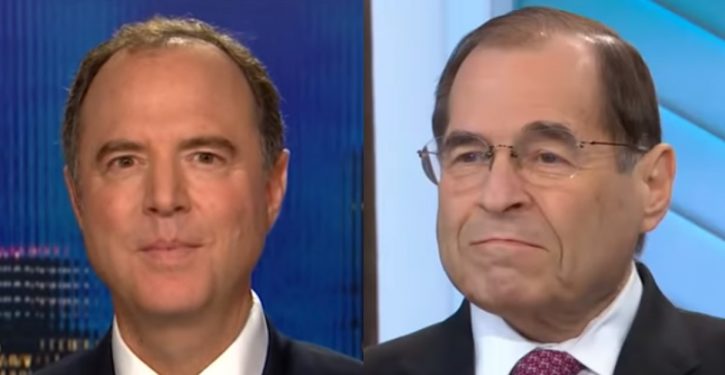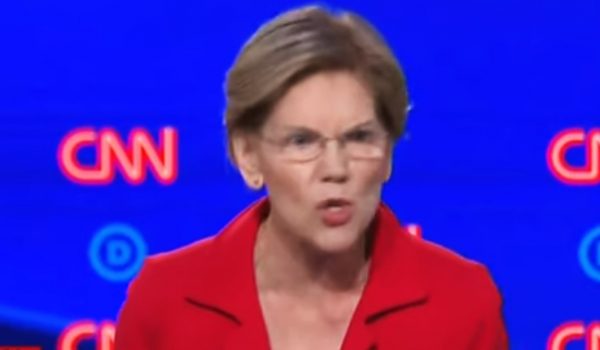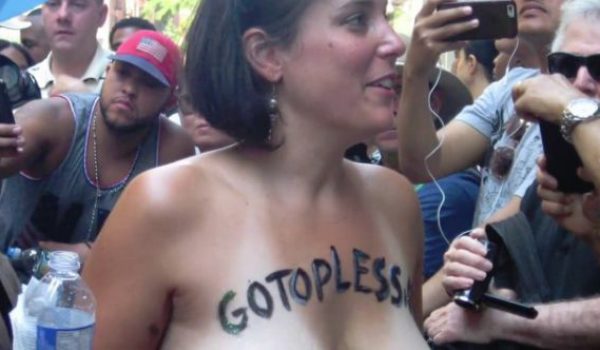
In retrospect, it is eye-catching in the extreme that the House Judiciary Committee’s request to have grand jury materials cited in the Mueller Report released to it was forwarded to the U.S. District Court for the District of Columbia on 26 July 2019.
The date, of course, is one day after the Trump-Zelensky phone call of 25 July 2019.
The Judiciary Committee placed the PDF file of the motion on its website on 26 July as well.
Will this presidential election be the most important in American history?


The point here is not about when the request was conceived. Its contents make clear that as a general matter, it had been in the works for some time prior to the forwarding date. It cites previous attempts by the Judiciary Committee (HJC) and the House Intelligence Committee (HPSCI) to obtain either (some of) the specific materials referenced in the text, or material of the same type that could be expected from subpoenas issued to officials at the Justice Department, including Attorney General William Barr.
The point is when the request was forwarded, and the emphasis now being made about its intent by HJC lawyers in the appeals process. They’re tying it to a concern in the House that the president is trying to set up interference in the 2020 election, a concern expressly linked to their impeachment inquiry.
A tweet by one of Twitter’s prominent Internet sleuths, The War Economy, brought this into focus on Friday.
What does Mueller's grand jury stuff have to do with a Burisma Ukraine Biden whistleblower call done months after the Mueller report ended? https://t.co/nzeJ5GoO1R
— The_War_Economy (@The_War_Economy) November 1, 2019
War Economy has a very good question. It prompted me to pursue just what the HJC court filings have indicated the connection is supposed to be. The answer seems to be in the second sentence of the appeal filed by HJC on 1 November of the stay granted by the appeals court to the DOJ on release of the grand jury materials. The emphasis is added.
The U.S. House of Representatives is conducting an inquiry to determine whether to impeach President Donald J. Trump. As part of that urgent investigation, the Committee on the Judiciary (Committee) has sought access to certain grand-jury materials that will aid the House in determining whether the President committed impeachable offenses, including attempted obstruction of the Special Counsel’s investigation of Russian interference in the 2016 Presidential election and solicitation of Ukrainian interference in the 2020 Presidential election.
The emphasized passage is of special interest because it is not a point made in the original filing from 26 July. The point was added in an argument filed by HJC on 30 September 2019, prior to the district court order issued by Judge Beryl Howell for release of the grand jury materials.
On its face, that sequence would seem to suggest the filing date of 26 July for the original request was mere happenstance; i.e., the House didn’t know at the time about what the Democrats subsequently began referring to as “solicitation of Ukrainian interference in the 2020 Presidential election.”
But a closer examination raises plausible doubt about that.
The specially evolving “2020 interference” theme
At each step along the way, the HJC filings discuss multiple grand jury redactions, on several topics, in the Mueller Report. Most of the topics recur in each filing.
A discussion found in the 30 September brief is the one of interest, because, as mentioned above, it isn’t recurring from the original, but being introduced. It refers to a redacted passage on p. 143 of the Mueller Report (Volume I), and the subject is an exchange between Paul Manafort and his associate Konstantin Kilimnik in February 2017 about a Ukrainian investigation of the so-called “black ledger” that figured in the case against Manafort (emphasis added).
[C]ertain Rule 6(e) redactions in Volume I clearly relate to Paul Manafort’s grand jury testimony, see, e.g., Mueller Report, Vol. I at 137 & n.896, 140 & nn.927 & 932, 143 & nn.953, 954, 955, including about Manafort’s discussions with an associate in February 2017 about “a criminal investigation into so-called ‘black ledger’ payments to Manafort that was being conducted by Ukraine’s National Anti-Corruption Bureau,” id., Vol. I at 143 & n.958. Such grand jury evidence—which the Judiciary Committee’s procedures permit sharing with the House Permanent Select Committee on Intelligence (HPSCI), see App. 25—would further HPSCI’s own investigation of the President’s efforts to press the government of Ukraine to investigate, among other things, “Ukrainians who provided key evidence against … Paul Manafort” to assist the President’s 2020 re-election bid.
As this shows, the 30 September HJC argument links the reference on p. 143 to Trump’s alleged attempt to involve Ukraine in interfering in the 2020 election.
The argument here actually looks thin, if we go back to the original source – the Mueller Report – and review the references alluded to in the above passage (pp. 137, 140, and 143). Only p. 143 has anything to do with the Ukrainian Anti-Corruption Bureau’s investigation.

The other pages contain discussion of Manafort sharing internal polling data from the 2016 Trump campaign with Kilimnik, along with discussion of a Ukrainian-proposed “peace plan” being passed to Manafort by Kilimnik, and separate exchanges with other parties referencing Oleg Deripaska, and the topic of battleground states in the 2016 election. No outright attempt is made to explicitly link those transactions to potential interference in the 2020 election. But grouping them with the p. 143 reference seems to imply such a link, or at least it isn’t clarified that a link is not implied. Note in passing: that comes off as an oddly careless mixing of points for a briefing to the court.



In any case, the redacted portion on p. 143 is not long enough to convey information significantly beyond what we can already see; i.e., that the passage is about Manafort and Kilimnik discussing the topic of the Anti-Corruption Bureau investigation. (The longer redacted portion at the top of p. 143 is about discussion between Manafort and Kilimnik of a Ukrainian-proposed “peace plan”; see below.)
Moreover – and especially given that context – a discussion in February 2017 of the “black ledger” being investigated was about Ukraine investigating matters that took place no later than 2014. (In fact, documented “black ledger” entries thought to involve Manafort dated to 2007 and 2009, and had nothing to do with 2016, much less 2020.)
It is actually quite unlikely that any grand jury testimony about that Manafort-Kilimnik encounter in February 2017 would have additional information needed by the House to assess whether what President Trump was trying to accomplish during his 25 July 2019 phone call was somehow connected to the 2020 election. Kilimnik spoke to Manafort about a Ukrainian investigation of things that happened between three and ten years earlier.
It’s fanciful to spin out of this an inference like HJC’s about Trump’s ulterior motives and the 2020 election, when the face-value meaning makes such obvious sense. Regarding Trump’s perspective and purpose in July 2019: from entirely different sources, Trump has reason to believe Ukraine was investigating activities related to both Manafort’s and U.S. Democrats’ involvement in Ukraine before the 2016 election – activities that the Democrats have been at pains to depict as evidence against Trump and his campaign. Indeed, there has been media reporting to the very effect that U.S. Democrats were working with Ukrainians to create this appearance of evidence.
Trump has good reason to be interested in Ukrainian investigations of such activities, without any reference at all to the upcoming 2020 election.
Then there’s the perspective of the Democrats in the House, who are not just U.S. representatives, but Democrats: senior members of the Democratic Party. There’s quite a lot they have the means to know already, given the reporting about the Alexandra Chalupa network. Bring in the Kilimnik-Manafort factor, with the limitation of its connection to the past, and there’s even less reason to think the grand jury materials are needed to provide insight on a supposed connection to 2020.
That’s not necessarily because Kilimnik is old news and would no longer be involved. We can’t certify that. It’s because Kilimnik was known to run tame among Obama-era U.S. diplomatic personnel during the same timeframe when he was working with Manafort – in fact, he was a confidential informant for the Obama State Department – and is very probably still accessible by at least some of them.
Kilimnik knows what was said in his exchange with Manafort in February 2017. In fact, given that many of the same U.S. embassy personnel from the Obama years were still in Ukraine at the time (February 2017), it’s probable that he already told them more than two years ago the same things he told Manafort. The Democrats in the House wouldn’t have any trouble finding that out from their fellow Democrats.
It’s what the Democrats connected to the Chalupa network don’t know that provides the clue to answering War Economy’s question. They have the means to know what Kilimnik knew. They have the means to know what Ukrainians knew, and what they’re doing now.
What they don’t know is what William Barr and John Durham know. That’s what they need the grand jury materials for.
That need would have immediately seemed more urgent the day after Trump’s phone call with Zelensky, because what Trump actually emphasized in the phone call was his interest in the Ukrainian investigation of interference in the 2016 election. That’s what he led off with. That was his priority.
That means it’s Barr’s and Durham’s priority, and what Rudy Giuliani was chartered by Trump to talk to Ukrainian officials about. What they’re looking into is what the U.S. Democrats were doing in 2015 and 2016 that may have constituted coordination with Ukrainians to interfere in the 2016 election.
The projection-frameup maneuver
The sequence of filings for the Mueller grand jury materials actually shows a classic progression from the Russiagate-Spygate playbook. It reveals the Democrats trying to frame Trump for something they were doing, in an attempt to achieve their own purposes. The sequence plays out as follows.
In the original request, filed on 26 July 2019, there are two items listed in the summary of the HJC’s requirements that are simply listed, near the end, without previous development (i.e., discussion and justification) in the text.
One of them is the passage on p. 143 of the Mueller Report. Not only is it not developed; prior to its inclusion in the summary, it’s not even mentioned. That’s in contrast to the other references to Manafort and Ukraine, including the passages on pp. 136-37 and 140. (Again, the content in those cases was about Manafort providing polling data to Kilimnik. The other topic Manafort and Kilimnik discussed was a “peace plan” being proposed by parties in Ukraine — but as we’ll see, although the Mueller Report recounts findings on this subject, the HJC request makes no meaningful reference to it.)
Here’s the prior discussion of the passages on pp. 136-37 and 140.

Here’s the summary near the end.

Notice that p. 143 is included under the topics of “Manafort’s sharing of internal Campaign polling data with Konstantin Kilimnik, an individual assessed by the FBI to have ties to Russian intelligence, and Manafort’s discussion of a Russia-Ukraine ‘peace plan’ with Kilimnik.” That’s the only allusion in the HJC request to the “peace plan” topic.
The top of p. 143 in the Mueller Report does have a section about the “peace plan,” based on the few unredacted words visible in it. But the “peace plan” reference isn’t developed in prior discussion in the HJC request, nor is it addressed at all in follow-on documents: the 30 September HJC brief, the 25 October order from Judge Howell, or the 1 November appeal by the HJC.
The topic of more apparent interest on p. 143 is the Manafort-Kilimnik communication about the Ukrainian Anti-Corruption Bureau’s investigation. But the HJC request from July doesn’t mention that at all. That’s a curious omission in any context, since it’s rather obviously of interest to the overall theme of the HJC request. It seems notably self-conscious in the context of the later emphasis on that very passage in the 30 September brief.
As seen in the summary, the other item that had no explicit prior development in the text is the reference to Erik Prince’s expedition to the Seychelles. More on that at the end of this article.
In the HJC argument of 30 September, the supposed “2020” import of the grand jury materials referenced on p. 143 is actually developed. That can be seen in the quotation above (with screen cap included below. By that time the House Democrats had their formally-acknowledged cognizance of the “whistleblower” allegation about the 25 July phone call, and had begun retailing their case to the public that Trump was trying to interfere with the 2020 election.

The order from Judge Howell for the release of the grand jury materials also make specific reference to p. 143, but as with the original HJC filing, it includes no mention of why it would be relevant (other than that it has information on a Manafort contact with Kilimnik).

Finally, the HJC appeal on 1 November alludes to the p. 143-based argument again, although without a specific reference to the Mueller Report citation.

In retrospect, given the timing, it can’t help looking like the 143 reference on 26 July was in the nature of a bait and switch, without a specific, focused justification, so that it could be developed later.
The issue is not whether that is proper procedure. The issue is that it looks awful darn particular. P. 143 is in fact the only reference included in the request for grand jury materials for which there is no mention of its relevant content in that original filing. Even the undeveloped reference to the Erik Prince activities contains identifying information about what it is. The p. 143 reference is inserted in such a way that, arguably, its inclusion in the summary list is not just uncommunicative but deceptive.
That can’t help suggesting consciousness by the Democrats who wrote the request of a need to know what’s in the grand jury materials on that specific topic, for a reason they weren’t willing to elaborate on at the time they filed the request. Such an appearance the day after the 25 July phone call is a flashing red light, requiring inquiry and resolution at the very least.
The Erik Prince reference
Regarding the Erik Prince activities (pp. 153-55 of the Mueller Report), which are also included without a prior argument for why they’re important to an impeachment inquiry, this looks like another classic ploy.
Prince’s meetings in the Seychelles occurred while Obama was still in office, in the last few days before the Trump inauguration in January 2017. Besides the grand jury references, the Mueller Report’s footnotes show that the special counsel investigation was relying on redacted “investigative techniques” to know the contents of communications about those meetings. What we can read into that is that the same thing we know about the Obama administration and Michael Flynn’s phone conversations with Russian Ambassador Kislyak. The same justification would have been used for any monitoring; i.e., the blanket hand-wave of national security for the Russian side of the equation.
Any such data package on the Russians involved is still accessible to some of the people who would have known it was being gathered at the time. But what the Democrats in the House don’t have is the grand jury testimony of Erik Prince. If they can get that, they’ll be in a position to look for discrepancies between Prince’s testimony and whatever was gathered on the Russians.
It’s been clear all along that the HJC request for grand jury materials is a fishing expedition. But it’s not just an open-ended quest for potentially useful information. It’s partly – and perhaps foremost – a targeted request for what Democrats have to fear Barr and Durham know about their activities.




